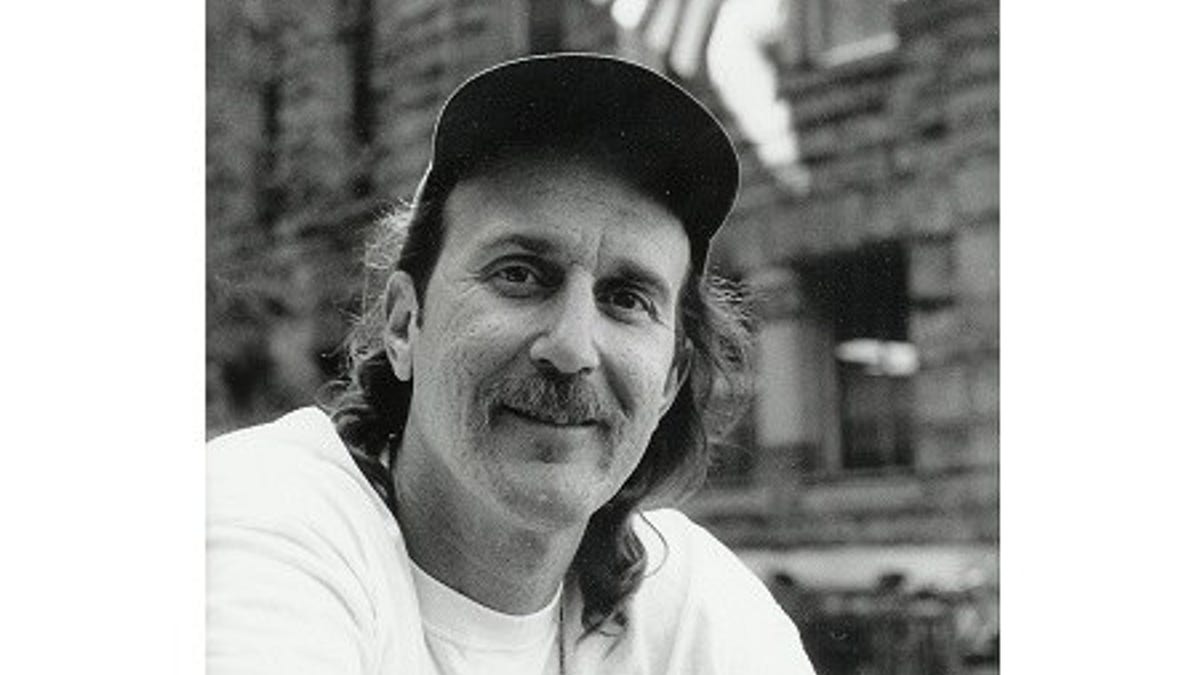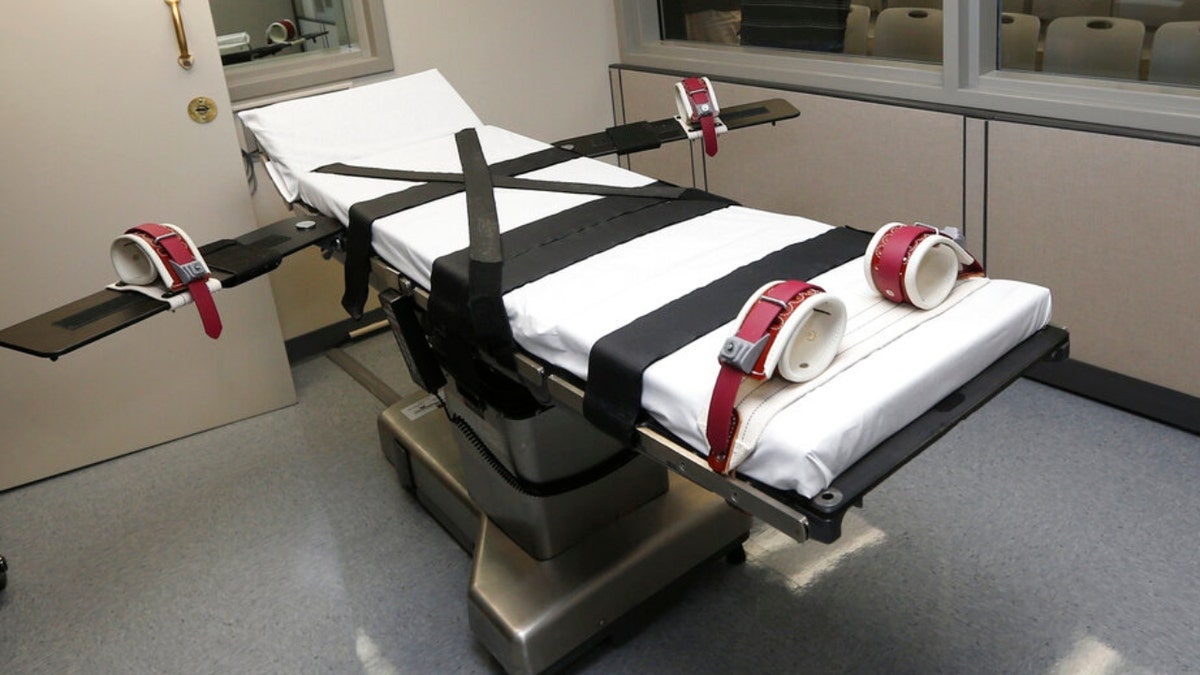Ray Krone, known as the 'Snaggletooth Killer,' spent three of his 10 years in prison on death row for a murder he didn't commit
Ray Krone was the 100th death row inmate exonerated since the reinstatement of capital punishment in the United States in 1976. CREDIT: Witness to Innocence
The "Snaggletooth Killer" never killed anyone, yet he was forced to survive three years of solitude on death row, where he was held in a 6-by-8-foot concrete cell with virtually no human interaction in the Arizona desert.
Ray Krone was convicted of murder and sexual assault of Kim Ancona, whose body was found in a Phoenix bar late December 1991, based solely on bite marks, now considered fringe evidence that can only exclude suspects.
Krone, now 66, was overwhelmed by emotions as he fought back tears during Friday's interview with Fox News Digital as he replayed the moment the judge slammed the gavel and said the words, "You're free to go," after he was exonerated.
Ancona's mother was in the courtroom that day in April 2002, and he could still see her hobbling over to him with her cane, tears in her eyes.
ALEX MURDAUGH CLAIMS HE LEARNED ABOUT ALLEGED JURY TAMPERING AFTER SENTENCING

Ray Krone, who was known as the "Snaggletooth Killer," was exonerated and released from death row. (Witness to Innocence)
"I knew how much she hated me, and rightfully so thinking I was the murderer," Krone told Fox News Digital.
"Here she was, a frail lady, walking up to me in tears and said, ‘Mr. Krone, I just want to apologize. I’m sorry for what happened to you. I know what it's like to lose someone. I lost my daughter, and your mom lost you for 10 years. Please forgive me. I just believed what they told me.'"
COLD CASE TORE FAMILY APART, DROVE VICTIM'S SISTER TO SUICIDE AFTER DECADES OF UNANSWERED QUESTIONS
Krone fought back his own tears while he relived this moment.
"I said, ‘Ma’am, it's not necessary. Just as you said. You believed what they told you,'" Krone said.
"I said, ‘This is my first opportunity to actually offer my condolences.’"

Ray Krone co-founded the Witness to Innocence group and dedicated his life's work to activism, education and helping exonerated death row inmates. (Witness to Innocence )
CLICK HERE FOR MORE TRUE CRIME FROM FOX NEWS
Her forgiveness was like another knife pulled out of his back, Krone said.
"That stabbing pain wasn't there anymore, or that throbbing sensation of how do I fix this? I'll never make it right. We were able to make it right," he said.
More than 10 years after Ancona was killed, Krone was exonerated at the age of 45 using DNA testing, which was relatively new at the time. It matched a convicted sex offender named Kenneth Phillips.
AP IMPACT: BITE MARKS, LONG ACCEPTED AS CRIMINAL EVIDENCE, FACE DOUBTS ABOUT RELIABILITY
Phillips was on parole at the time of the murder and ultimately took a plea deal, which was a relief to Krone, so Ancona's mother wouldn't have to go through another gut-wrenching trial of staring at disturbing crime scene photos.
Krone's case is one of the most infamous true-crime cases in both Arizona and Pennsylvania, where he was from, and an example of a flawed judicial system – particularly death row, considered "society's worst of the worst."

Ray Krone, known as the "Snaggletooth Killer," was sentenced to death but exonerated nearly 11 years later. Signs like this cropped up because he made it through with the love and support of his family and community, he told Fox News Digital. (Witness to Innocence )
He was the 100th death row inmate exonerated since the U.S. reinstated capital punishment in 1976.
"It's not the worst of the worst. I'm not the worst of the worst, and I was there for three years," said Krone, who met someone else who was "on the row" for signing a confession, even though he couldn't read or write.
What was it like on death row?
Krone still cringes at the "Snaggletooth Killer" nickname. He said it was part of the justification to put him to death.
"They can't kill a man, they have to kill a monster," he said. "So, they called me the ‘Snaggletooth Killer.’"
DEATH OF POTENTIAL WITNESS IN DOG-COLLAR CAPTIVITY CASE FUELS SERIAL KILLER SPECULATION
Despite the derogatory, monstrous image it evokes for those who never met Krone, he was — and still is — a religious man, a practicing Lutheran. He read the Bible front to back multiple times and marked some stories down with the word, "Hope," or listed specific Bible verses to keep him going.
Growing up, he was in church nearly every Sunday with his family, except for the six years he was active duty in the Air Force.

Ray Krone talks about his experience and surviving death row for a video for Witness to Innocence. (Witness to Innocence )
The Bible and the unwavering support from his family and local community, who believed he was innocent, kept him going, he said.
He remembered receiving a letter from his grammar school English teacher, who expressed her support. They wrote back and forth, and he even joked that she corrected his grammar mistakes.
Without that love and the Bible, he said, he would have lost his mind, and "people have lost their minds because of the lack of contact," Krone said.
"Death row in Arizona was isolation. You didn't have physical contact with any other inmates. You never left your cell without being strip searched and shackled at the waist and shackled at the ankles to guards who take you away wherever you went," he said.
WATCH: ONGOING DEATH ROW CASE IN IDAHO
And his cell was so small he could just about touch it end to end. There was a mattress, a blanket and no air conditioning. His pillow was a towel rolled up around his sneaker, and guards purposely let food get cold before serving the inmates, he said.
"In the summertime, you'd wet the floor and lay down there on your sheet you know to stay cool," Krone said.
ALABAMA TO BE FIRST STATE TO EXECUTE PRISONER USING NITROGEN, SETTING OFF DEATH PENALTY DEBATE
Only during rec time, which was in a small, boxed-in area with 10-foot hurricane fencing, could he talk to someone through ventilation ducts, he said.
He was taken off death row after he lost his second trial in 1996 and sentenced to life in prison. That was the first time DNA evidence was introduced in his case, but the jury sided with a paid specialist who talked about the bite marks.
Freed at last
In 2002, Krone was finally a free man.
"It was April 8, 2002, and I got called over the counselor's office," Krone said. "He said, ‘Hey, your attorney (is) on the phone.'"
GLYNN SIMMONS OFF DEATH ROW AFTER ALMOST 50 YEARS
Krone said he was confused. His lawyer was asking him what he wanted to eat.
"What do you want? Steak? Seafood? Mexican food? A beer? What do you like?"
"I said, ‘What the devil are you talking about?’" said Krone, who paused to compose himself. "He said, 'You're coming home today. Roll up, Ray. It's all over.'"

A gurney used in giving lethal injections to convicted death row inmates. (AP Photo/Sue Ogrocki, File)
Krone had "cautious optimism."
"I still had to go in front of the judge, and we didn't know what the prosecution was going to do," he said.
"We still had things to worry about. Were they going to lock me up in county jail for God knows what to drag it out, hoping something went wrong, or maybe Kenneth Phillips would lie and say I was with him."
GILGO BEACH MURDER VICTIMS FORGOTTEN DURING YEARS OF CORRUPTION AND SCANDAL
None of his anxieties came true. The judge said he was a free man, and he hugged his family and friends, who traveled from Pennsylvania to Arizona for that moment.
The judge's gavel slammed April 24, 2002, the same day Krone spoke to Ancona's mom for the first time.
What he's done since his release
For the last two decades, Krone has turned his life into a motivational beacon by talking to schools and groups of people as part of his dedication to Witness to Innocence, a nonprofit that helps exonerated death row inmates, and a local Pennsylvania group that advocates for the abolition of the death penalty.
He started the group in 2005 with Helen Prejean, the nun who wrote "Dead Man Walking."
He's spoken in front of the United Nations, government officials and in countless state capitols to stress there are mistakes in death row cases, personally helped other death row survivors and made an impact on people's lives.
His story is the topic of a recently released documentary that aired on Investigation Discovery.
CLICK HERE FOR MORE TRUE CRIME FROM FOX NEWS
He remembers one young man in particular who waited back to talk to Krone one on one to tell Krone his story inspired him to go to law school.
"He said, ‘Excuse me, Mr. Krone. You probably don’t remember speaking in my high school years ago, but I wanted to introduce you to my mom and tell you you're the reason I'm going to law school,'" Krone said.
"I've been fortunate enough to have people come up to me like that and said I made a difference. That's all I want is to make a difference in someone's life."
CLICK HERE TO GET THE FOX NEWS APP
There have been at least 95 more death row inmates exonerated and freed since Krone in 2002, according to Death Penalty Information Center.
Less than two weeks ago, Glynn Simmons was exonerated after being sentenced to death in Oklahoma in 1975 for the murder of Carolyn Sue Rogers. He was on death row almost 50 years.
























